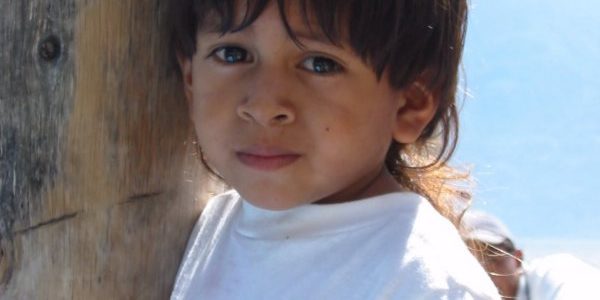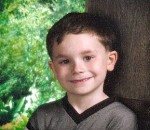It is not foster parents, social workers, judges or court workers making life miserable and creating a lifetime of failure for abused and neglected children in the Child Protection system.
These people don’t enter this painful and unhappy field without firm convictions and big hearts.
I’ve known hundreds of committed teachers, health workers, and other service providers who have dedicated years of their lives and made a terrific commitment to State Ward children.
Our system today confounds their efforts and makes meaningful adult relationships for too many at risk children impossible.
Way too many kids experience a hundred teachers, social workers, medical personnel, juvenile and justice workers handling their case and multiple foster homes. It’s cold and mechanical and not humane.
Instead of a crucial connection to a few adults, she/he will shuffle along the food chain, part of a system that guarantees feelings of “aloneness”, “otherness” with no sense of love and belonging that they so desperately need at this time of their life.
Meaningful adult relationships are critical to healing from traumas suffered in toxic homes and our system does not foster this.
For our institutions to succeed at improving the lives of at risk children, we need a deeper understanding at all levels of the depth and scope of the underlying issues and appreciate the deep need a child has for long term, meaningful adult relationships. Few people today know the ground truth an abandoned child experiences moving through child protection today.
The last sentence is critically important to understanding this article. As an example, the words written on every box of Prozac, “may cause suicidal ideation” have a slightly disturbing meaning to those who have never experienced fully formed thoughts of suicide and an entirely different interpretation to those who have not slept for 2 or 3 nights because they just experienced fully formed thoughts of violently and vividly suiciding delivered into the mind like lightening.
The fear and trauma of suicidal ideation is tangible and lasting (fyi, 20,000 two year olds were fed psychotropic medications in 2014).
This metaphor demonstrates the vast difference in perceptions of people who know and understand the life Kendrea Johnson led in her short six years before she tied a sophisticated knot in her jump rope and hung herself leaving a note for the rest of us to read and wonder about.
It’s not right to blame her foster mom, social worker, therapist, teachers, or the many other service providers that ruled her short life. They were all doing what the system required and to expect different results would be a false hope.
In Kendrea’s case (as in almost all cases) there was no transparency, communication or system in place to record or discuss this child’s distressed self-hate or talk of homicide or suicide or interrupt the child’s decent into suicide.
When the deputy police chief and medical examiner were quoted by Brandon Stahl in the Star Tribune, they commented that six year olds were rarely capable of suicide.
It is true that it takes advanced thinking on the part of this six year old to execute a successful suicide because she couldn’t read and had no one in her life to explain how suicide actually worked.
What the deputy police chief and medical examiner didn’t say that could have shed light on this awful tragedy was that many, many children in child protection have dangerous behaviors and plenty state ward children exhibit violent and self-harming behaviors – and it is not uncommon that state ward children try to kill themselves.
I have had an eleven year old state ward client try to kill himself multiple times, visited a 4 year old in the suicide ward of Fairview hospital and witnessed many of these children cut themselves with razor blades and inflict other awful self-harming acts on their person.
Two decades of working with and watching the institutional impact of Child Protection on traumatized children make me think that there are several critical protocols making kids hate their lives and behave in life threatening ways.
1) Child protection must stand for the traumatized children within the system and not exist for the institution or the people working within it.
Listening to Child Protection service providers respond to the Task Force oversight committee, I realized that providers often respond with explanations of how the system functions from a mechanical perspective and not how children are experiencing the services. Not being available for abused children on weekends because the folks in the department don’t work weekends was not acceptable (Thank You Jan Callison for your response at the Task Force meeting, that was real leadership).
2) 20,000 two year olds were proscribed psychotropic medications in 2014 and Johnson and Johnson was fined 4 billion dollars for illegally selling these drugs to pediatricians for use by children. There are 5000 more cases awaiting trial. Institutionally, we use these drugs because they are cheap and an easy way to calm a violent and unstable child.
The side effects of these drugs are profound, and healing behavioral problems will take a much greater effort on our part if we want to see these children lead productive lives.
3) State ward children do not need 100 people rotating out of their lives – it destroys the child’s feelings of self-worth, belonging and permanency.
“You just talk to me because you are paid to” is stated by many and thought by all these kids.
Children require the stability of adults in their lives.
Child Protection today, doesn’t work that way.
Too few of the older children in my caseload had the luxury of a long term relationship with stable adult to turn to. Too many children had 4, 5 and 6 foster home placements hundreds of teachers, health care and social workers by the time they aged out of foster care.
Aging out of the system was terrifying to them. They had no-one to turn to when their coping skills failed them.
This hurts our schools, crowds our jails and makes living in parts of our city so unhappy and unsafe. There are multiple reasons that 80% of children aging out of foster care lead dysfunctional lives.
Children in the system feel like an unimportant cog in a mighty machine. As long as children remain a cog in the industrial machine that is child protection and we keep using Prozac instead of therapy, drunk uncles instead of quality daycare and a hundred service providers instead of meaningful relationships, our schools can’t work and crime and violent behaviors will remain a serious and growing problem in our communities.
Traumatized children need a small personal team that will not rotate out of their life and will be there for the child for as long as it takes. The system we have today is too much like an assembly line where children are passed from station to station with the primary goal to move the child to the next station.









